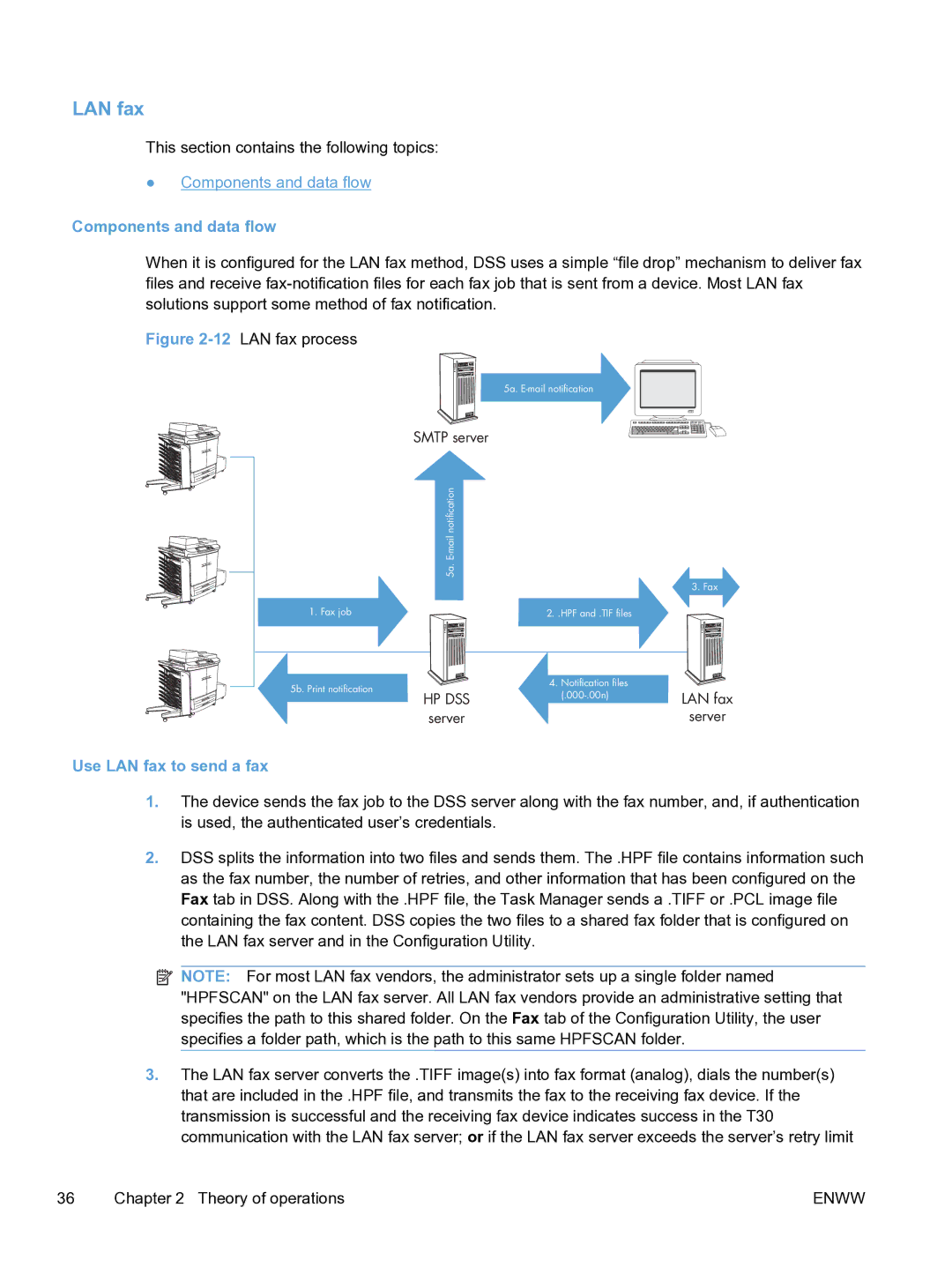
LAN fax
This section contains the following topics:
●Components and data flow
Components and data flow
When it is configured for the LAN fax method, DSS uses a simple “file drop” mechanism to deliver fax files and receive
Figure 2-12 LAN fax process
| 5a. |
| SMTP server |
| |
| 5a. |
| 3. Fax |
1. Fax job | 2. .HPF and .TIF files |
5b. Print notification
HP DSS
server
4.Notification files
LAN fax
server
Use LAN fax to send a fax
1.The device sends the fax job to the DSS server along with the fax number, and, if authentication is used, the authenticated user’s credentials.
2.DSS splits the information into two files and sends them. The .HPF file contains information such as the fax number, the number of retries, and other information that has been configured on the Fax tab in DSS. Along with the .HPF file, the Task Manager sends a .TIFF or .PCL image file containing the fax content. DSS copies the two files to a shared fax folder that is configured on the LAN fax server and in the Configuration Utility.
![]() NOTE: For most LAN fax vendors, the administrator sets up a single folder named "HPFSCAN" on the LAN fax server. All LAN fax vendors provide an administrative setting that specifies the path to this shared folder. On the Fax tab of the Configuration Utility, the user specifies a folder path, which is the path to this same HPFSCAN folder.
NOTE: For most LAN fax vendors, the administrator sets up a single folder named "HPFSCAN" on the LAN fax server. All LAN fax vendors provide an administrative setting that specifies the path to this shared folder. On the Fax tab of the Configuration Utility, the user specifies a folder path, which is the path to this same HPFSCAN folder.
3.The LAN fax server converts the .TIFF image(s) into fax format (analog), dials the number(s) that are included in the .HPF file, and transmits the fax to the receiving fax device. If the transmission is successful and the receiving fax device indicates success in the T30 communication with the LAN fax server; or if the LAN fax server exceeds the server’s retry limit
36 | Chapter 2 Theory of operations | ENWW |
